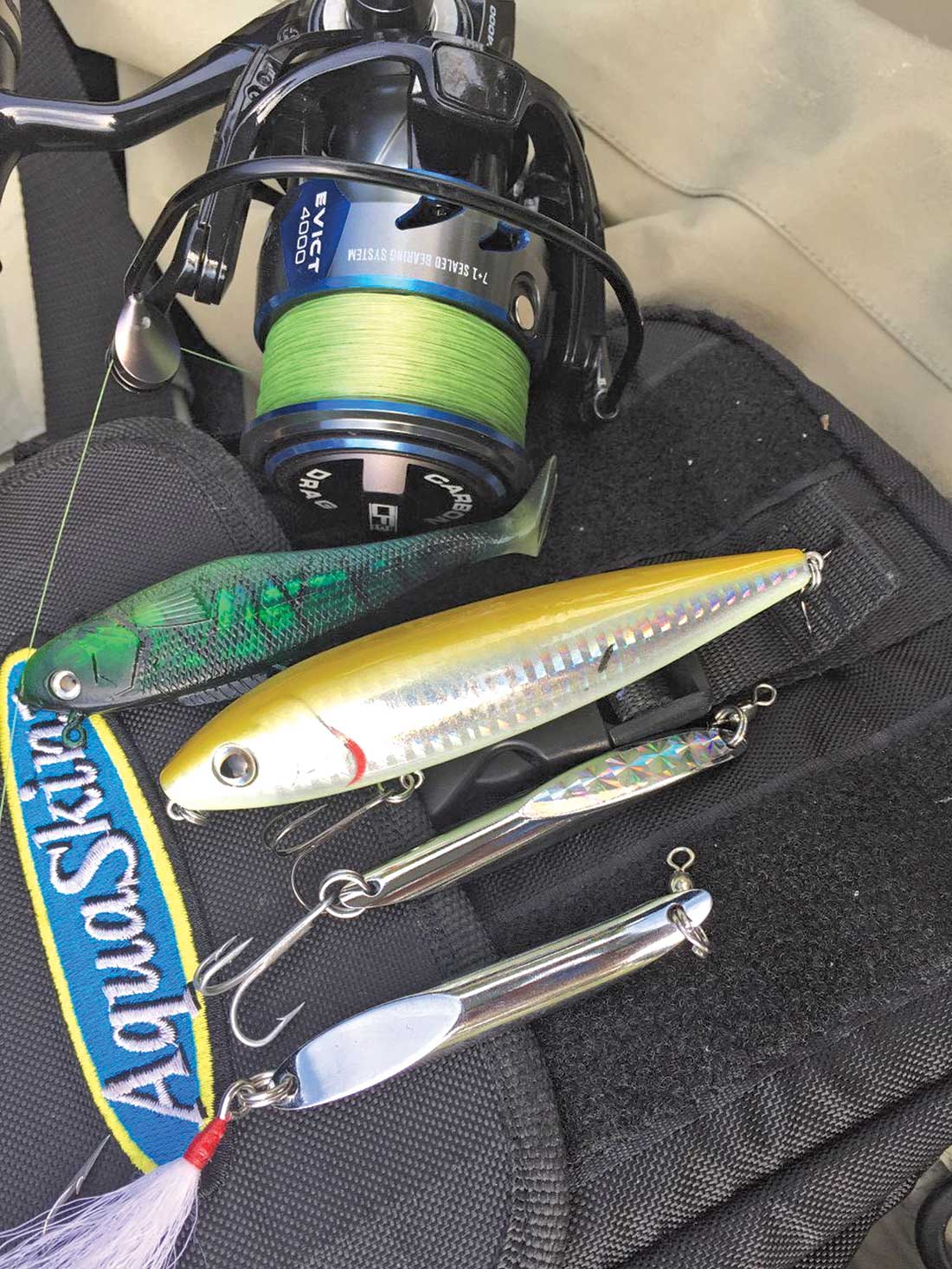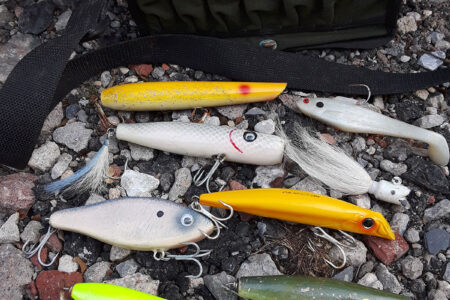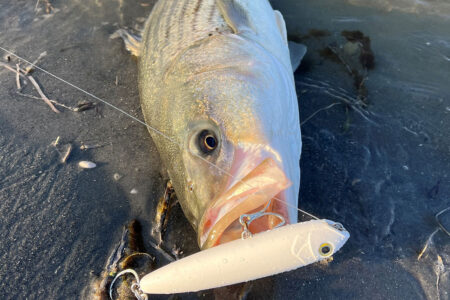Take advantage of the current crop of small stripers by scaling down your tackle and having fun catching them.
The abundance of schoolie stripers in the surf the past couple of seasons has allowed casters to really downsize their gear and have fun targeting these smaller fish. Catching these fish on light tackle is a blast when at sunrise and sunset the wind sometimes dies down to a whisper, the surf flattens out and you can cast with what is basically freshwater tackle.

A good example of a light surf rig is the all-cork handle 7-1/2-foot Tsunami Carbon Shield II 761MH. It’s rated for 10- to 17-pound test mono or 10- to 20-pound braid and is capable of flinging lightweight metal, poppers, swim plugs and shads quite some distance. It matches well with a Tsunami Evict 4000, a spin reel noted for its good drag, and sealed bearings to keep things running right even if it gets splashed in the surf.
Light spinning gear is a delight to cast because it feels good in the hand, not like you’ve been lifting weights at the gym after a two-hour surf session. Plus, they have surprising beef to haul back on schoolie bass and to turn that occasional teen-size striper into the last wave of the wash. The blanks are designed with a tip light enough to cast a wide range of lure weights from “rubbah” swim shads, light-weight Hogies, pencil poppers, swimming plugs and various metals. The light tip is matched to a progressive-taper blank that delivers power from the butt section.
There’s no need to go heavier than 20-pound braid, like Power Pro’s Slick 8. Besides assuring casting distance, the thin diameter of the braided line cuts through surf and waves with minimal resistance allowing swimming plugs, shads and bucktails, and metals to work with superior action. The no-stretch feature of braids assures improved hook-setting capabilities and also translates into better pulling power to subdue the fish more quickly.
When using braided line, you’ll need a mono or fluorocarbon leader, and a good way to attach it to the main line is with a 130-pound test micro barrel swivel. Add the swivel to the braid with a Uni-Knot then add a heavy mono or fluoro leader with a Three-Turn Clinch Knot. The swivel also provides a handy way to attach a short 6- to 8-inch leader for a teaser. To minimize the teaser wrapping around the main leader, it helps make the teaser leader heavier in pound test than the main leader.
If you don’t like to use a swivel to join the leader to the main line try a Five-Turn Surgeons Knot. Double about 2 feet of the gel-spin line, hold it next to a 5-foot mono or fluoro leader and form an overhand loop. Pass the tag end of the leader and doubled braid through the loop five times, then draw tight. If you’re doing this at your workbench add a drop of Hard As Nails nail polish to prevent the braid ends from fraying. Attach a Duolock snap at the mono end for quick lure change. An Albright or Alberto’s Knot are two other knot choices.
For light surf, a go-to bag of lures can be relatively small with a handful of leadheads with soft plastic tails and swim shads. Poppers are always great for visual thrill at dawn and dusk, and your bag should have some slim swimming plugs. Metals like the Mid Wave and Slim Wave, Kastmaster, diamond jigs with a rubber tail and Hopkins Shorty are always go-to choices.
Beaches that run north to south are usually best if the wind forecast has a “W” in it. The surf will generally be calm making the landing fish an easy task, but choppy or rough surf makes the job tougher when you’re fishing light tackle. East to west beaches are usually best with a north wind on the south side and a south wind on the north side.
Most light-tackle fish are lost in those last few feet when fish and waves combine forces. If you keep the pressure steady, a lot of pressure can be put on a fish with 20-pound line. The trick is to momentarily give line by lowering the rod angle as the wave recedes letting the fish slip back into the wash, and then regain line as the next wave washes the fish up on the beach.




